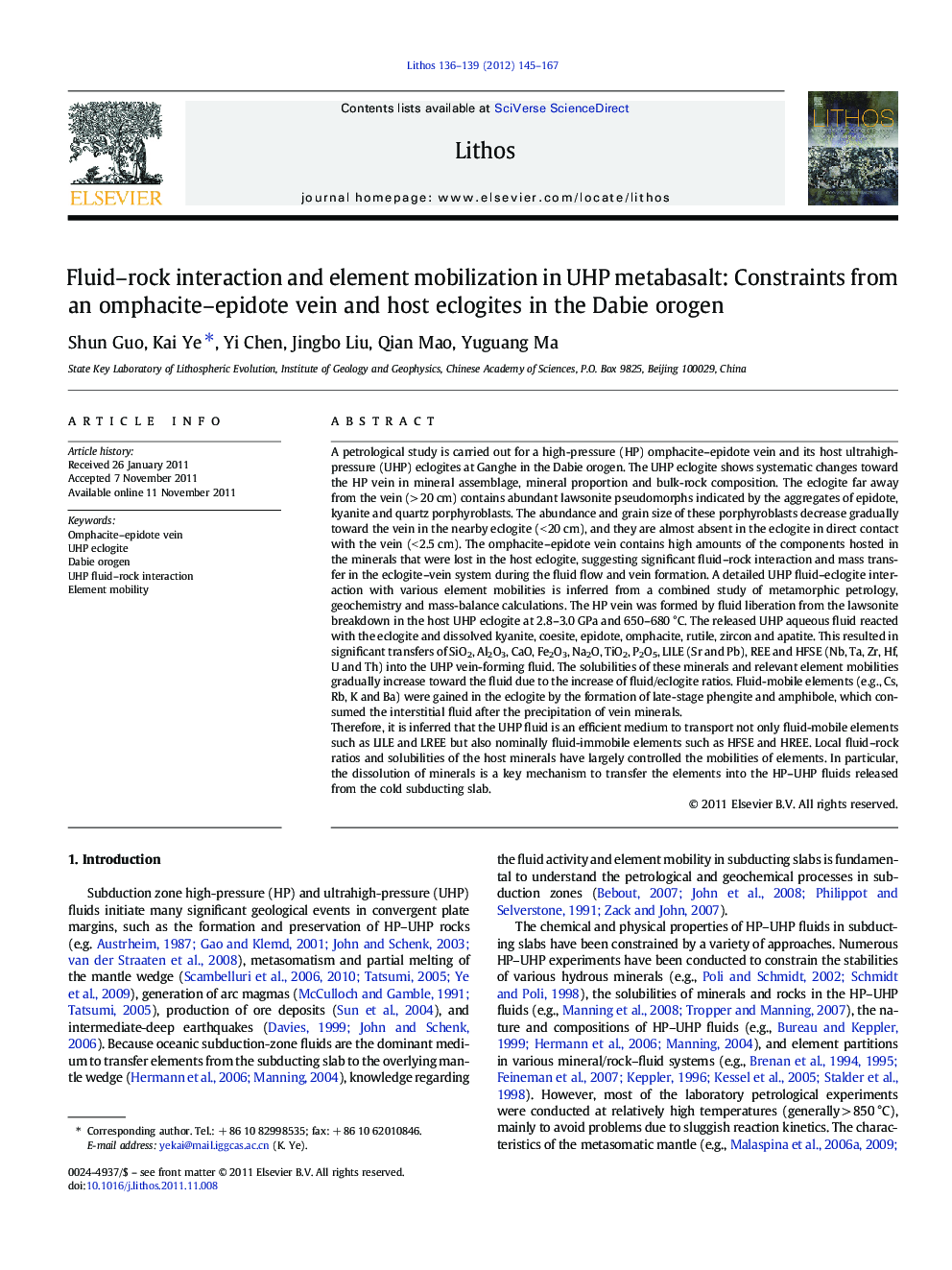| کد مقاله | کد نشریه | سال انتشار | مقاله انگلیسی | نسخه تمام متن |
|---|---|---|---|---|
| 4716646 | 1638710 | 2012 | 23 صفحه PDF | دانلود رایگان |

A petrological study is carried out for a high-pressure (HP) omphacite–epidote vein and its host ultrahigh-pressure (UHP) eclogites at Ganghe in the Dabie orogen. The UHP eclogite shows systematic changes toward the HP vein in mineral assemblage, mineral proportion and bulk-rock composition. The eclogite far away from the vein (> 20 cm) contains abundant lawsonite pseudomorphs indicated by the aggregates of epidote, kyanite and quartz porphyroblasts. The abundance and grain size of these porphyroblasts decrease gradually toward the vein in the nearby eclogite (< 20 cm), and they are almost absent in the eclogite in direct contact with the vein (< 2.5 cm). The omphacite–epidote vein contains high amounts of the components hosted in the minerals that were lost in the host eclogite, suggesting significant fluid–rock interaction and mass transfer in the eclogite–vein system during the fluid flow and vein formation. A detailed UHP fluid–eclogite interaction with various element mobilities is inferred from a combined study of metamorphic petrology, geochemistry and mass-balance calculations. The HP vein was formed by fluid liberation from the lawsonite breakdown in the host UHP eclogite at 2.8–3.0 GPa and 650–680 °C. The released UHP aqueous fluid reacted with the eclogite and dissolved kyanite, coesite, epidote, omphacite, rutile, zircon and apatite. This resulted in significant transfers of SiO2, Al2O3, CaO, Fe2O3, Na2O, TiO2, P2O5, LILE (Sr and Pb), REE and HFSE (Nb, Ta, Zr, Hf, U and Th) into the UHP vein-forming fluid. The solubilities of these minerals and relevant element mobilities gradually increase toward the fluid due to the increase of fluid/eclogite ratios. Fluid-mobile elements (e.g., Cs, Rb, K and Ba) were gained in the eclogite by the formation of late-stage phengite and amphibole, which consumed the interstitial fluid after the precipitation of vein minerals.Therefore, it is inferred that the UHP fluid is an efficient medium to transport not only fluid-mobile elements such as LILE and LREE but also nominally fluid-immobile elements such as HFSE and HREE. Local fluid–rock ratios and solubilities of the host minerals have largely controlled the mobilities of elements. In particular, the dissolution of minerals is a key mechanism to transfer the elements into the HP–UHP fluids released from the cold subducting slab.
► UHP Lawsonite breakdown in Ganghe eclogite occurred at 28–30 kbar/650–680 °C.
► Released UHP fluid dissolved Ky, Ep, Qtz, Omp, Rt and Ap in the eclogite.
► Elements in dissolved minerals were transported and precipitated into the Omp–Ep vein.
► Element transfer degree increases toward vein due to the increase of fluid/rock ratio.
Journal: Lithos - Volumes 136–139, April 2012, Pages 145–167